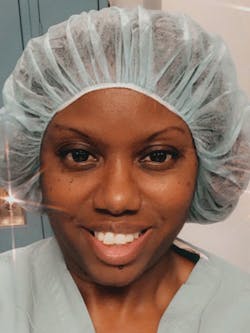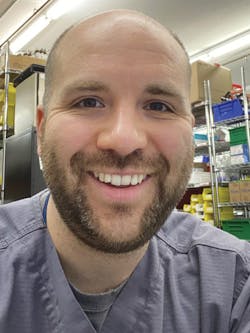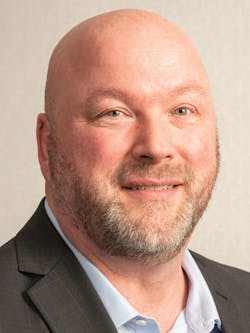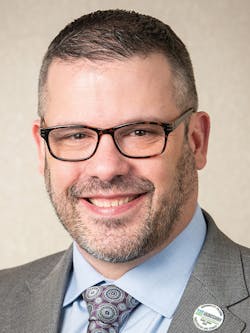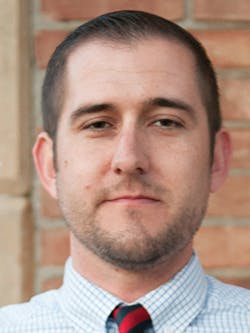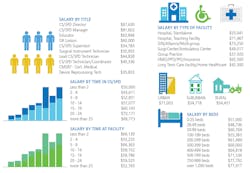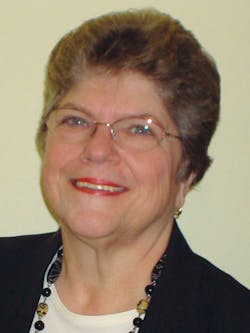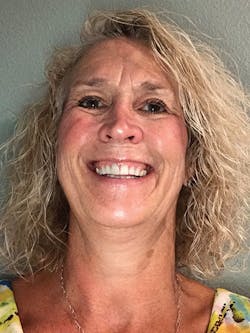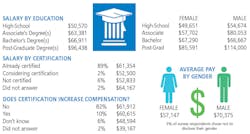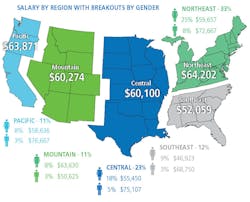The average central sterile/sterile processing department (CS/SPD) professional’s salary is down 5 percent (from $63,344 in 2019 to $60,465 in 2020), fewer are expecting bonuses this year (down 10 percent) and job security has taken a slight dip (down 11 percent) according to the results of the 2020 Healthcare Purchasing News CS/SPD Salary Survey. While salaries have increased within some CS/SPD positions, they have decreased in others.
- OR Liaisons see greatest gains: OR Liaisons saw the largest salary gain, increasing 26 percent from $47,500 in 2019 to $60,000 in 2020.
- Surgical Instrument Technicians continue steady pay increases: CS/SPD professionals in this category experienced an average salary increase for the third year in a row, from $37,500 in 2017 to $38,611 in 2018, to $42,045 in 2019, and now to $50,955 in 2020 - a 21 percent increase from last year to this year.
- CS/SPD Directors still on top but average salary is down: CS/SPD Directors are still at the top in terms of pay – at $97,630 in 2020 – but the average annual salary in this category is down 14 percent compared with last year.
- CS/SPD Supervisors, CS/SPD Managers and Lead CS/SPD Technicians all experienced modest gains: All three categories reported an increase in average salary from 2019 to 2020, with CS/SPD Supervisor salaries growing 7 percent ($51,125 to $54,783), CS/SPD Managers growing 4 percent (from $78,617 to $81,602) and Lead CS/SPD Technicians growing 2 percent (from $43,929 to $44,828).
- Educator salaries are down after two years of significant gains: After salary jumps of 20+ percent from 2017 to 2018 and again from 2018 to 2019, Educator salaries took a dip this year, down 6 percent – from $67,917 in 2019 to $63,846 in 2020.
- CS/SPD Technician/Coordinator salaries remain steady, plus new category for this year: The average annual salary for CS/SPD Technician/Coordinators changed little since last year, from $40,852 in 2019 to $40,336 in 2020. HPN added a new CS/SPD function to its survey this year, Certified Medical Device Reprocessing Technician (CMDRT), with those within this category reporting an average annual salary of $35,833.
“I feel the SPD department in some facilities is looked at as an afterthought like they’re not important as the operating room (OR). I think they tend to forget that we are an important part of any case that goes on in the OR. Compensation does not add up and I guess that depends upon the facility in which you work.”
“There isn’t adequate compensation as you develop into the role. Salaries have gotten slightly better but not as well as other fields.”
“When you compare the U.S. labor statistics with sterile processing and other jobs that have stress and deal with complicated issues and risks, it does appear sterile processing is keeping up more today than in the past.”
“The salary question is more complex than just measuring increases and decreases,” saidAs in past years, education level, facility type and geographic region all impact average CS/SPD salaries. Once again, those with post-graduate degrees earn the most; with an average annual salary of $96,438, up 6 percent over 2019, while those with high school diplomas alone earn the least, with an average annual salary of $50,570 (down 5 percent).
CS/SPD professionals working for an HMO/IPO/insurance provider reported the highest average annual salary at $92,500, followed by those in IDN/alliance/multi-group facilities at $73,250, and teaching hospitals at $71,467. Those working in group practice facilities reported the lowest average annual pay at $37,500.
As in past years, those CS/SPD professionals working in urban areas earn the most, with an average annual salary of $71,003 in 2020. The average annual pay of those working in suburban facilities dropped nearly 15 percent since last year – from $64,172 to $54,718 – bringing salaries closer to those in rural facilities, which had an average annual salary of $54,451.
This year, the Northeast won out as the highest region for pay, with CS/SPD professionals in this geographic area reporting an average annual salary of $64,202, beating out the Pacific region, with an average annual salary of $63,871 (down from $72,617 in 2019).
“Compensation levels in our industry are one of the central challenges facing recruiting and retention across the entire country, from frontline sterile processing technicians all the way up to the associate vice president positions,” said Balch. “Human resource departments conduct their own localized ‘market surveys’ to determine current salary ranges for CS departments, but they rarely have the courage to break out of the status-quo compensation model to actually effect positive trends regarding pay. Technicians in these markets are effectively stuck in a financial rut that can only be escaped by leaving the region or leaving the industry. It’s a no-win situation, but it’s playing itself out again and again around the country.”
Job security lower, but CS/SPD remains a secure profession overall
CS/SPD professionals reporting to feel “very secure” or “somewhat secure” in their profession is down from 92 percent in 2019 to 82 percent in 2020. But in speaking with those in the industry, it is a secure profession for better or worse depending upon to whom you are speaking. Furthermore, high turnover continues to be a challenge.
“Education is essential to job security but so is dedication, ethical behavior and a desire to be the best you can be,” Jensen added. “I believe you play the biggest role in your job security by the decisions you make every day…so make each one count for you!”
“There is probably more security in the modern sterile processing profession today than I’ve seen over my 27-year career,” said Berg. “With the increased focus on patient outcomes and the increased scrutiny to our profession, I’ve found that if you perform well and are a valued member of the healthcare team, you’ll set yourself apart and have great opportunities. Committing to education, training and certification will help keep that job security very strong.”
According to Balch, even if current CS/SPD positions are not being eliminated, new position requests are often being denied and vacant positions are being closed prior to rehire. He states:
“While it is true that surgical volume is still on the rise, hospitals are continuing to feel the squeeze on their profit margins, forcing many to look for cost savings in departments such as sterile processing. While scary, this is a reality for a growing number of departments around the U.S. The end result is that some regional markets have an excess of job seekers, but a shrinking number of roles that need to be filled.”
Jenson, who has worked in both sterile processing and materials management during his career, points out a negative side to CS/SPD job security. When asked what job security is like in the profession, he stated:
“Better than it should be. Lots of departments are putting up with poor performers due to fears of worker shortage.”
“There are many factors that play into employee retention; such as, pay, competition from other hospitals, failure to pass certification in the required amount of time, lack of advancement potential, and disciplinary actions just to name a few. If an employee has the drive to excel in SPD, the ‘sky is the limit’ for them. There are many opportunities for SPD professionals at all levels; however, many either don’t seek them out or they simply don’t have the drive due to personal reasons or the level of compensation they’ll receive when taking on a bigger role.”
Certification holds steady but has little impact on compensation
The number of survey respondents who are certified or in the process of becoming certified was the same as last year, at 94 percent. The number of respondents stating that certification is a requirement at their facility was down slightly, at 62 percent in 2020, compared with 67 percent in 2019.
“There are those who will say certification is not required to do the job we do,” said Thurmond. “They feel certification is only taking a test and that it does not always equate to a good sterile processing technician. I disagree. Certification, in any profession, is an attempt to challenge and elevate the test takers based on their knowledge and ability to demonstrate a task with efficiency.”
“This should bring recognition and elevation of the profession, as it demonstrates a desire for technicians who have proven they can rise to the occasion and complete necessary tasks to deliver quality service and promote patient safety,” Thurmond added. “Even after certification is attained, it is essential to challenge and test those professionals; this is what makes certification a long-term benefit for the professional and the department.”
When asked if earned certification education units/points equate to a higher level of compensation at their facilities, fewer respondents said “yes” – only 10 percent compared with 16 percent in 2019.
“Do barbers and bus drivers need to be certified? Yes. Have these certifications improved their salaries and brought them greater recognition? I’m not convinced they have,” said Balch. “Nor am I convinced that certification alone is the silver bullet that will pull the sterile processing industry out of the basement and into the board room. Is it a part of the solution? Potentially. But we’ve had certification available to our technicians for almost 50 years, and yet we are still struggling with the same systemic challenges of recognition and compensation that we were in 1971. At some point we have to start looking at additional avenues for advancing our cause and changing these dynamics.”
Jenson says basic certification - Certified Registered Central Service Technician (CRCST) increases pay only slightly at his facility, with raises roughly $0.50-$1. He adds that additional certifications, such as Certified Instrumentation Specialist (CIS), Certified in Healthcare Leadership Strategies (CHL) and Flexible Endoscope Reprocessor (CFER), “do nothing to improve pay.”
“Certification recognition is largely based upon department leadership making it a priority and something to be celebrated,” Jenson adds.
“At my hospital, once you become a certified processing technician your pay is about $15 an hour with no experience but if you’re certified and have experience it is two dollars more, which is $17 an hour,” said Holder. “I am trying to earn the CIS and CHL certifications but that will not change my pay at the hospital where I am now.”
Education continues to be a priority
CS/SPD professionals continue to seek out educational opportunities to advance their knowledge and careers. This year, 77 percent of survey respondents said they participate in 10 or more continuing education courses each year, with 34 percent participating in 20 or more annually. Unfortunately, only 10 percent say their employer gives them higher levels of compensation when obtaining certified education units/points.
“While there is nothing wrong with online training, hands-on training has more of an impact,” said Holder. “We need more training schools for this field in North Carolina like those in California and Pennsylvania where they have more on-site training opportunities.”
With regards to higher education, over half of respondents (55 percent) hold an Associate’s, Bachelor’s or Post Graduate Degree. In Jenson’s experience, his own degree has helped him advance in the CS/SPD profession, he states:
“I’ve benefitted from candidate selection/higher wages due to my degree. Though I know of people who are doing better than I am, despite not having a degree. I think this is situational but in the future you can expect to need a Bachelor’s.”
“Without a doubt, college degrees can help you unlock many of the bigger roles out there in the industry, whether that’s as a manager, director or vice-president,” said Balch. “Simply having a degree doesn’t mean you are smarter or better equipped, but the reality is that many HR departments view a bachelor’s degree as a prerequisite for any higher level position. The only way to change this model is for current department leaders to change their job description requirements and open these roles up to a broader swath of the industry who are qualified but do not hold a college degree. I think that needs to happen, but it’s up to leaders in the trenches to actually make the change.”
“I’ve seen a big change over the past several years as it relates to CS/SPD leadership education requirements, which has had a big impact on some tenured employees,” said Lane. “It’s becoming rare for a manager or director not to have at least a Bachelor’s degree, which is limiting some tenured hospital employees from having/applying for a leadership role. I believe this is an extremely valuable shift for our profession as we continue to have more focus put on us and as our roles and responsibilities grow.”
“Education always plays a key role in compensation and career advancement,” said Berg. “When combined with experience, this is what the hospital leadership and HR compensation teams look at when evaluating the job and the individual. Sterile processing professionals are not destined to be low-wage earners. Even if they lack a degree, they can elevate their status through certification, continuing education and a demonstrated desire to advance their knowledge and skill sets.”
“While employers look at years in service as a ‘value add’ because it shows commitment to the profession (which is valuable), it can be difficult to put a dollar figure on that alone,” Berg added. “It’s my belief that years in the profession coupled with education and certification are the perfect trifecta for driving higher compensation – and recognition. Constantly elevating yourself and your professional goals is what I look for in anyone I hire.”
Roles and responsibilities
Those interviewed agreed that the roles and responsibilities of the CS/SPD have increased significantly in recent years and continue to increase.
Lane says the key reasons for the increase are “changing technologies, increased surgical volumes, certification, quicker turn around times in the OR and reduction of staff. “As the focus of surgical infections shifts more in the direction of CS/SPD and the role they play the roles and responsibilities will continue to increase,” she added.
When asked what functions report directly to the CS/SPD head in their facility, not surprisingly sterile processing was the top response (95 percent), followed by decontamination (87 percent), case carts (59 percent), medical equipment cleaning/disinfection (45 percent) and GI/endoscopy (41 percent). Those naming GI/endoscopy in the CS/SPD reporting structure increased significantly last year – from 27 percent in 2019 to 41 percent in 2020 – perhaps pointing to the need for better cleaning and sterilization of endoscopes in response to infectious disease outbreaks.
“The job is getting too big for one profession,” said Jenson. “I think we need to compartmentalize in order to succeed. It’s getting too complex. C-Suite seems to see us as a group who are ignored until something goes wrong.”
“The roles and responsibilities are increasing dramatically, but the department must also be open to accepting to them,” said Berg. “We should openly embrace these roles and responsibilities, as long as we (and our team) get the support we need to meet these new or changing roles. Taking on more challenges provides value and helps brings the department to the table.”
CS/SPD workflow and technology trends
Each year we ask survey respondents questions related to the latest technologies and trends they are seeing in the profession and industry. As Thurmond points out, the increasing complexity of surgical instrumentation continues to drive new processes and technologies to effectively and safely process them. He states:
“New and more sophisticated instrumentation continues to be introduced, with many steps required for the reprocessing of those new instruments. Gone are the days of cleaning, inspecting and prepping stainless steel instrumentation only. Today’s instrumentation includes disassembly, flushing ports for timed periods, testing and reassembly of the instrumentation. As procedures become more complex and intriguing, the world of the sterile processing professional also becomes more complex and difficult. It is frustrating to see that this factor is often inadequately addressed in the decision making of the manufacturer and within our healthcare organizations.”
This year’s survey found:
- Track and trace systems are widespread: The majority of those surveyed say their facilities either use such a system or are in the processing/planning stage (66 percent).
- Emphasis on emerging disease safety: Half of those surveyed (50 percent) have a safety training program in place for handling instruments for patients with suspected emerging diseases, while 6 percent are in the planning stages.
- Increased adoption of sterile processing workflow management systems: There was an increase in those reporting use of workflow management systems in their facilities, with 52 percent stating “yes,” compared with 44 percent in 2019.
- Fewer implementing new measures related to reprocessing related outbreaks: This year, 45 percent of survey respondents reported that their facilities had put in place any new measures, compared with 56 percent in 2019.
- Little change in IFU methodologies: Only 22 percent of respondents said their facilities have changed their instruction for use (IFU) methodology, down slightly from 2019 (27 percent).
- HLD versus sterilization: For reprocessing of flexible and rigid scopes, the majority of those surveyed say they use sterilization (42 percent) over high-level disinfection (HLD), while for flexible scopes only, the majority report using HLD (31 percent). Of those that use sterilization, the vast majority use steam (76 percent), followed by ethylene oxide gas/EtO (9 percent), vaporized peracetic acid (6 percent) and ozone (3 percent).
Advice for climbing the CS/SPD career ladder
When asked what advice they would have to CS/SPD professionals on climbing the career ladder, those interviewed for this article provided these thoughts:
Balch: “Climbing the career ladder in the CS industry is not formulaic. It’s not as simple as A + B = Career growth. While there are many things a person can do to better prepare themselves for advancement opportunities, technicians should never feel like there is only one way to grow. Pursing a mentorship relationship with someone who knows you personally and can help cultivate your individual strengths is one of the best decisions an eager employee can make.”
Berg: “From someone who has been blessed to achieve so much in this profession, I have a unique vantage point of looking back and reflecting on what could I have done differently. I have held just about every job, including frontline technician, team lead, educator, supervisor and manager. I was even a scrub technician and GI technician at one point in my career.
“One thing that I have always believed in - besides the need to always commit to knowledge growth, professionalism and hard work - is being ready for anything and always lending a hand,” he added. “Whenever someone said he or she needed help, I was the first to raise my hand, and whenever someone was talking or teaching, I was 100 percent engaged and listening. When it came time for me do the job, I gave it my all, every day and every time. In doing these things, I was ready when the opportunity arose, and I became a prime candidate when new positions opened. I’ve always been fond of this quote, which I believe applies here: ‘If you’re not at the table, you’re on the menu!’”
Jensen: “Climbing the career ladder in CS/SPD begins with a desire to move up, but before you can move up you must start on the ground floor. The best advice I can give anyone is do not limit yourself, work hard, put in the time and work your way up the ranks. Learn everything you can about the sterile processing profession. Take an online sterile processing course or take a course at a local college and a sterile processing certification exam. Remember, you are not limited to only one certification you may hold additional certifications such as flexible endoscope reprocessor.
“Join a local chapter of CS/SPD professionals, become a member of other organization(s) on a state or national level, network with others as you build your career,” she added. “Get involved by presenting educational programs to other groups, and attend outside seminars, workgroups, etc. Set goals for what you want to achieve, work towards them and never stop believing in yourself.”
Jenson: “Attitude is everything. Be positive. Be upbeat. Focus on your work, not someone else’s. Get an education outside of SPD as it will help you get into leadership roles.”
Lane: “Knowledge is power. Seek out education and get involved in the profession at a local and national level. Certification is incredibly important, and the more people immerse themselves into the profession with additional certifications they will gain more insight into the profession and how important SPD is in providing safe patient care, and ultimately more respect for themselves.”
Thurmond: “Build yourself within and develop the confidence and ability to take on deeper challenges. Step up when the opportunity is available and demonstrate yourself to be patient focused, safety focused and results driven. Preparing for future opportunities is important. If a job requires a particular certification, for example, it is best to already have that certification completed and under your belt when that job comes available; at that point, you will have set yourself up for meeting that requirement and will be more confident and prepared for the new role.
“Also, we often see people clowning around at work and not demonstrating that they are trustworthy or quality focused, but we should never let others stand in our way,” he added. “A good manager or director will recognize positive traits and know a person is ready for growth, advancement and new opportunities.”
A personal story of climbing the CS/SPD career ladder
 It was a traumatic, family event that prompted Sterile Processing Educator/Advocate Anna Castillo-Gutierrez, AA, CRCST, CSPDT, CIS, CFER to enter into the CS/SPD profession. While working at Payless ShoeSource, Castillo-Gutierrez received a phone call that her father’s business had been robbed and he had been shot in an effort to protect his wife/Castillo-Gutierrez’s mother. He was rushed to the hospital for a six-hour surgery.
It was a traumatic, family event that prompted Sterile Processing Educator/Advocate Anna Castillo-Gutierrez, AA, CRCST, CSPDT, CIS, CFER to enter into the CS/SPD profession. While working at Payless ShoeSource, Castillo-Gutierrez received a phone call that her father’s business had been robbed and he had been shot in an effort to protect his wife/Castillo-Gutierrez’s mother. He was rushed to the hospital for a six-hour surgery.
For the next year, Castillo-Gutierrez’s father was in and out of surgeries due to infections and other complications. “After awhile I became very concerned about everything going on with him,” said Castillo-Gutierrez. “I wanted to learn what was going on and give back to the man who was always there for his family.”
Castillo-Gutierrez has worked to earn certifications from both IAHCSMM and CBSPD, climbing the CS/SPD career ladder from Sterile Processing Technician to Supervisor, and most recently serving as Sterile Processing Program Director and Instructor for Fortis College in Houston.
“When I first learned of Sterile Processing I never thought it would lead me down the path I’m on today,” said Castillo-Gutierrez. “What I do know is that it has come with a lot of hard work and dedication.”
When asked for her advice to others working to advance their careers in the profession, she offers the following advice:
• Find passion in your work: “You may not necessarily have the same reason I did for pursuing a career in Sterile Processing, but your work needs to mean something to you at the end of the day. A big reason I’ve been able to excel is because of the energy and passion I’ve brought to the department; it sets me apart.
• Network: “Networking is also one of the most important tools you can use when climbing the career ladder. If you’re a student or about to start working in a Sterile Processing department you need to start attending as many CS/SPD meetings and conferences you can - I can’t tell you the doors it will open. Having the correct connections when you need them will come in handy when your pursuing growth in Sterile Processing. Social media can be a great starting point for many - I tell every single of my students to join the groups and be active in the discussions.”
• Never stop learning: “Learn something new about Sterile Processing every day - I cannot stress that enough. One of the best decisions I made in my career was setting aside time every single day for reading, writing or doing something new in Sterile Processing. When I started working in SPD I worked night shift, and I was often left alone to make decisions or fix issues that took place in the department overnight. I did not want to look incompetent so I started picking up the IFU catalogues and AAMI handbooks, and that eventually evolved into reading policies and procedures at the hospitals, which leads to my final and most important advice. Make sure all your learning turns into actions. You want to be a great tech or leader? You need to use all you’ve learned to benefit the patient, otherwise you’re not doing it right.”
“Remember the career ladder is simply taking one step at a time in the right direction and grasping new knowledge one concept at a time, Castillo-Gutierrez added. “You’ll get noticed by the right people eventually.”
About the Author
Kara Nadeau
Senior Contributing Editor
Kara Nadeau is Sterile Processing Editor for Healthcare Purchasing News.


